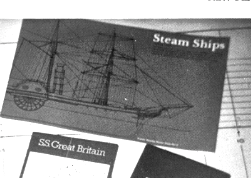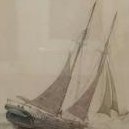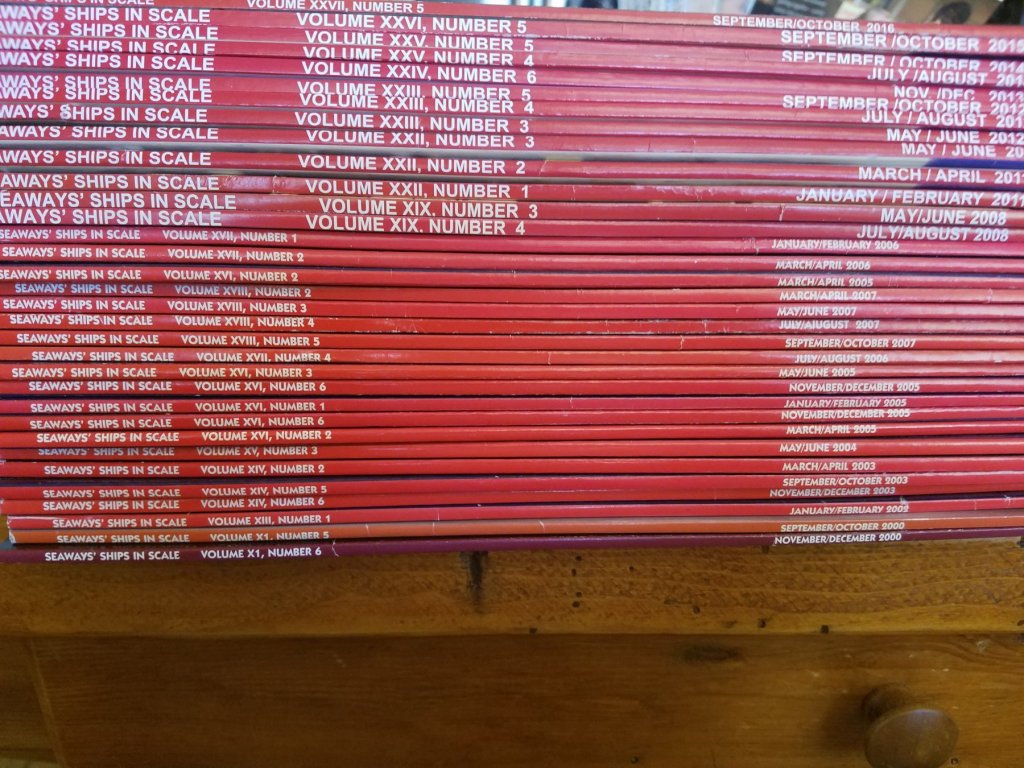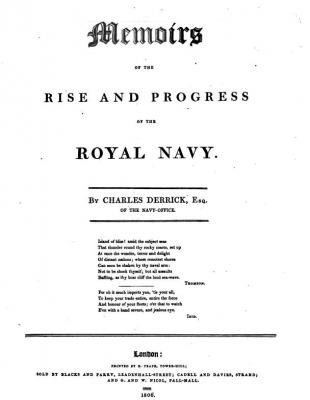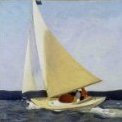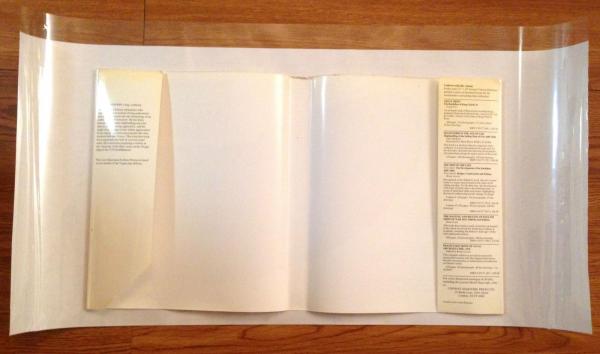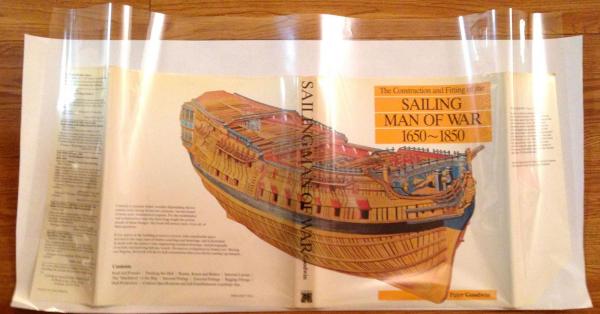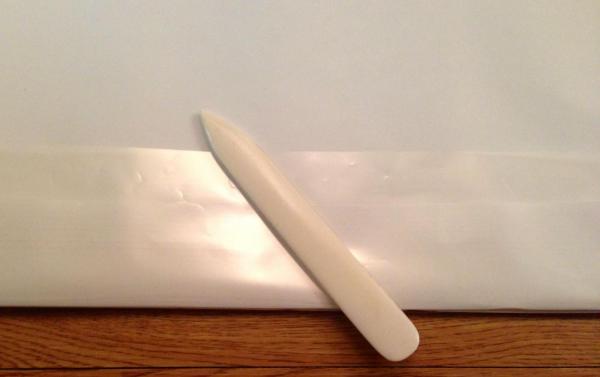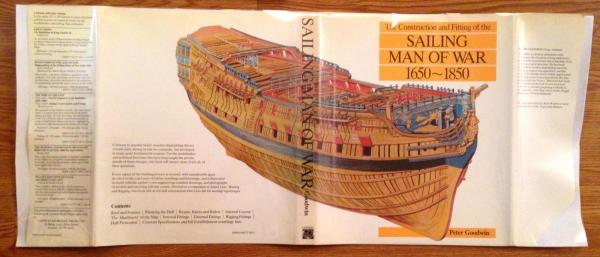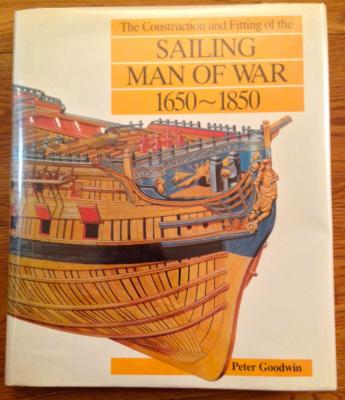Search the Community
Showing results for tags 'books'.
-
Hi, William Mowll in his book about SS Great Britain refers to his books where he gathered his knowledge about steam propelled ships from. There is a photo of some, but not all were mentioned explicitly in the bibliography section. Especially this book on the upper half of the attached image: Does anybody know this book? I would like to know more about the complete title, author, publisher and may be the isbn.... Best regards Thomas
- 3 replies
-
- drawingsplans
- steam ships
-
(and 2 more)
Tagged with:
-
I need to thin out my book collection and am offering the following for sale. I prefer PayPal for payment but will accept check or money order. I tried to price them fairly but am open to offers. Please PM me with your requests. Prices DO NOT include shipping. Thank you, Paul --- Paul R. Mitchell Ship Modeling Books for Sale: Alexander, Caroline The Bounty, The True Story of the Mutiny on the Bounty, New York, Viking, 2003, ISBN 0-670-03133-x [like new w/dustcover], $2 Attwood, Edward L. Text Book of Theoretical Naval Architecture, London, Longmans, Green & Co., 1905 [good condition] $10 Blake, Nicholas & Richard Lawrence The Illustrated Companion to Nelson's Navy, Mechanicsburg, PA, Stackpole, 2000, ISBN 0-8117-3275-4 [soft cover, excellent condition] $8 British Shipbuilding Research Association Journal, Vol 9, 1954, bound set, ex US Patent Office Library [very good condition] $5 Chapelle, Howard I. The National Watercraft Collection, Washington, Smithsonian Institution, 1976, ISBN 0-87742-060-2 [very good condition w/ dust jacket] $5 Forester, C.S. Admiral Hornblower in the West Indies, Boston, Little, Brown and Co., 1958 [book club edition, fair condition w/torn dust jacket], $2 Lord Hornblower, Boston, Little, Brown and Co., 1946 [first edition, fair condition], $2 Young Hornblower, Three Complete Novels (Mr. Midshipman Hornblower / Lieutenant Hornblower / Hornblower of the Atropos), Boston, Little, Brown and Co.,1948-1953 [good condition w/ fair dust jacket], $5 Young Hornblower, Three Complete Novels (Mr. Midshipman Hornblower / Lieutenant Hornblower / Hornblower of the Atropos), Boston, Little, Brown and Co.,1948-1953 [fair condition w/o dust jacket], $4 Frolich, Bernard The Art of Ship Modeling: Sailing Navy 1680-1820, Piermont/Nice, Pier Books/Dupont Communications/A.N.C.R.E., 2002, [excellent condition w/ dust jacket], $65 Goodwin, Peter Men O' War, the Illustrated Story of Life in Nelson's Navy, London, Carlton, 2003, ISBN 1-84442-871-0 [excellent condition w/ dust jacket], $4 Herreshoff, L. Francis Capt. Nat Herreshoff, the Wizard of Bristol, New York, Sheridan House, 1974, [good condition w/ dust jacket], $5 Lavery, Brian Nelson's Navy, the Ships, Men and Organisation 1793-1815, London, Conway, 1989, ISBN 1-59114-611-9 [soft cover, very good condition], $14 The Arming and Fitting of English Ships of War 1600-1815, Annapolis, Naval Institute Press, 1987, ISBN 0-87021-009-2 [excellent condition w/dust jacket], $50 Lees, James The Masting and Rigging of English Ships of War (revised edition), London, Conway, 1984, ISBN 0-87021-948-0 [very good condition], $28 Lovette, Leland P. Naval Customs Traditions and Usage, Annapolis US Naval Institute, 1939 [very good condition, no dust jacket], $2 Miller, David The World of Jack Aubrey, Philadelphia, Courage Books, 2003, ISBN 0-7624-1652-1 [like new condition w/ dust jacket], $6 Morison, Samuel Eliot Admiral of the Ocean Sea, a Life of Christopher Columbus, Boston, Little, Brown and Co., 1942 [first edition?, good condition], $2 Admiral of the Ocean Sea, a Life of Christopher Columbus, Atlantic Monthly Press reprint [paperback, two volumes, excellent condition], $1 Philbrick, Nathaniel In the Heart of the Sea, The Tragedy of the Whaleship ESSEX, New York, Viking, 2000, ISBN 0-670-89157-6 [excellent condition w/dustcover], $1 Pope, Dudley Life in Nelson's Navy, London, Chatham, 1981, ISBN 1-86176-034-5 [paperback, very good condition w/some writing on inside front cover and 1st page], $1 Rosenow, Frank Sailing Craft, Boston, Sail Books, 1983, ISBN 0-914814-33-8 [very good condition w/ fair dust jacket], $2 Smithsonian Institution, National Museum of American History The Maritime Administration Collection of Ship Plans (1939-1970), catalog, [very good condition, no dust jacket] $2 Ship Plan List: Maritime Collection, catalog, [very good condition, no dust jacket] $5 Steel, David Steel's Elements Mastmaking, Sailmakingand Rigging, Edward Sweetman, NY, reproduced by photolithographic process from the 1932 edition, [very good condition with all five folding plates, no dust jacket], $55 Underhill, Harold A. Masting & Rigging the Clipper Ship & Ocean Carrier, Glasgow, Brown, Son & Ferguson, 1969 [very good condition w/ dust jacket], $8 Plank-on-Frame Models and Scale Masting & Rigging – Vols I and II, Brown, Son & Ferguson, 1974 [very good condition w/ dust jackets], $14 Sailing Ship Rigs & Rigging, Glasgow, Brown, Son & Ferguson, 1974 [very good condition w/ dust jacket], $9
-
The American Fishing Schooners: 1825-1935 By Howard Chapelle Hardcover: 690 pages Publisher: Norton; 1st edition (April 1, 1973) Language: English ISBN-10: 0393031233 ISBN-13: 978-0393031232 This is a great reference book for any serious model builder, with lots of details and illustrations, clearly charting the evolution of the design of the American fishing schooners over the golden age of their careers. The evolution of the American fishing schooner from the 18th century to the last working and racing schooners of the mid-1930s is recounted in this book. The designers, builders and crews are discussed, and 137 plans of schooners show graphically the development of the type. An important feature of the book is its illustrated glossary-appendix, which covers items of hull construction and equipment, rigging and gear, colour and carving, and includes notes by the builders and riggers themselves. Chapelle was born on February 1, 1901. From 1919, he worked as a marine apprentice and designer for a number of shipbuilders. After 1936, he went into business for himself, and later served as head of the New England section of the Historic American Merchant Marine Survey, a New Deal project designed to research American naval history and staffed by unemployed marine architects. During World War II, Chapelle served in the United States Army Transportation Corps ship and boatbuilding program. In 1950, he ventured to England where he researched colonial ship design on a Guggenheim fellowship. In 1956/57, he served the United Nations Food and Agricultural Organization as a consultant on fishing boat construction to the government of Turkey. Upon returning to America, he was appointed Division of Transportation curator of the National Museum of History and Technology. Ten years later, in 1967, he stepped down as curator to assume the role of Senior Historian. He retired in 1971, accepting the title of Historian Emeritus. Even though some of Chapelle's adaptations of historical designs were imperfect, his large collection of draughts and information is still valuable today. Many (most?) of his plans are available from the Smithsonian Institute at the History of Technology Division of the National Museum of American History. His other books include: American Sailing Craft American Small Sailing Craft The Bark Canoes and Skin Boats of North America, with Edwin T. Adney Boatbuilding: A Complete Handbook of Wooden Boat Construction The History of the American Sailing Navy: The Ships and Their Development "Chesapeake Bay Crabbing Skiffs" The History of American Sailing Ships The National Watercraft Collection The Search for Speed Under Sail: 1700 -- 1855 "Notes on Chesapeake Bay Skipjacks" Yacht Designing and Planning
-
Ships in Scale magazines, I have many back issues all are available in one bulk shipment. They were given to our club. First come first serve FREE you cover the shipping. I've attached a picture of the spines showing the years a volume numbers. Please pm me for questions. This will be bulk not individual issues.
-
The original Ship Modeler’s Shop Notes first published by the NRG in 1979 and out of print for several years is being reprinted and will be ready for sale by early April. The original Ship Modeler’s Shop Notes contains “Shop Notes” and some longer articles from the first 25 years, Volume 1 to Volume 25, (1980) of the quarterly Nautical Research Journal. This book has been described as a book that ship modeler’s must have. This is a completely separate book from Ship Modeler’s Shop Notes II published in 2009 – SN2 covers Volumes 26 – 50 (1981-2005). If you have Shop Notes II we are sure you will want to add the original to your library and if you don’t have either, now is the time to get both. Be sure to contact the office for the member’s discount code that will save you $5.00 off the list price. Save on shipping when you order both Shop Notes (1 & 2). Place your order through the NRG office and pay only one shipping fee of $6 for shipping both copies (US only & to the same address only!). When the books are in stock we will announce they are available for purchase.
-
I just finished reading Endurance by Alfred Lansing. It's a reprint of the original written in 1959 and tells the story of the Antarctic expedition of Ernest Shakleton and his 27 man crew . It was a little over 50 years ago that I read Shakleton's Valiant Voyage, a 98 page quick read by the same author. That book stuck in my head because it was the first book I read that I couldn't put down. but I remembered little else. When I ran across the reprint of Endurance, I had to pick it up and see if it was as good as the short version. It was better. Anyone who wants a refresher of this amazing story or if you never read the story, I strongly recommend it. For much of the book, my jaw was open in disbelief. It kept me up into the wee hours reading because I couldn't put it down. I've read a number of stories of the sea that told about man faced with the fury of nature - In The Kingdom of Ice, Voyage For Madmen, Fatal Storm, Gathering Wind - but this book more often had me wondering, how on earth did these men survive? And all of them did, which may be the most remarkable thing of all.
-
I am a non-recovering bibliophile...according to Wikipedia, The classic bibliophile is one who loves to read, admire and collect books, often amassing a large and specialized collection. Bibliophiles do not necessarily want to possess the books they love; an alternative would be to admire them in old libraries. However, the bibliophile is usually an avid book collector. Yep - that's me! Actually, it is apparently contagious. Between my long suffering Admiral in Chief who has upwards of 200 cookbooks and our other assorted collection, we have conservatively 1,500 volumes on a wide array of topics from History to Philosophy to our specialized Terrorism collection (work related, of course) and now nautical themed. The attached document is a listing of the print, PDF and a few on-line documents that are a part of the collection. Feel free to offer suggestions on books I should consider adding to my collection, and Happy Modeling! Wayne Neither should a ship rely on one small anchor, nor should life rest on a single hope. Epictetus Waynes Nautical Resource List ver 2 rev 11Feb13 for MSW.pdf
-
Not yet out - according to the good folks at Amazon due out in August 2015. French Warships in the Age of Sail 1786 - 1862: Design, Construction, Careers and Fates Hardcover – August 30, 2015 Hardcover: 352 pages Publisher: Seaforth Publishing (August 30, 2015) Language: English ISBN-10: 1848322046 ISBN-13: 978-1848322042 Product Dimensions: 9.6 x 1.3 x 11.4 inches Shipping Weight: 3.4 pounds
-
Good afternoon, one and all. I hope that all are doing well. Attached is an updated version of my nautical resources This first file is primarily PDF format files that can be found on the internet (link included whenever possible). Note that not all are free (some may require a subscription to a site or publication). Waynes Nautical Listing 22 April 2015.pdf This second file is primarily printed books (though a few PDF documents did sneak in). Waynes Nautical Books 22 April 2015.pdf As this is a work in progress, there are some obvious typographical errors and formatting issues in some of the listings that I will work on as time allows. Please let me know if you have any questions!
-
Hoxland, E., 1797: The Naval Officers Formula, Or Stationing Vade Mecum, Showing the Distribution of a Ship’s Company of a First to a Sixth Rate, at Mooring, Un-mooring, Watching, Quartering, Reefing, Furling, and Working Ship. With Order of Battle ... E. Hoxland, 72 pp. http://books.google.com/books?id=eWVGAAAAYAAJ. Captain in the Royal Navy, 1804: Observations and instructions for the use of the commissioned, the junior, and other officers of the Royal navy, on all the material points of professional duty: including also, forms of general and particular orders for the better government and discipline of His Majesty’s ships..With an appendix ; being a complete set of forms for watch, station, and quarter bills for ships of war. Printed for P. Steel, 110 pp. http://books.google.com/books?id=eVwMAQAAMAAJ.
-
The French 74 L'Entreprenant (launched 1751 at Brest) was destroyed during Siege of Louisbourg (1758). Would "The Seventy Four Gun Ship" by Boudriot be useful for modelling her? I ask because I am dispersing a large collection of maritime history and ship modelling books from the estate of an acquaintance. The first three volumes of Boudriot's series are part of the collection. I am not very knowledgeable about this period and can't really tell weather Boudriot's books cover all French 74s or just a subset from a particular period. Building the L'Entreprenant would be a project for the distant future but there is little sense in my selling the books if they might be useful to me at some point. Thanks Brian
-
Good Day All, I'm doing basic research for a model of a three masted ocean carrier ca1900. What are considered the best technical reference books for this type of ship? I'm currently helping to disperse the maritime book collection of a recently deceased gentleman and there are a number of books on masting and rigging etc. available to me. Thanks, Brian
-
Author: Charles Derrick Published 1806 Description from Cambridge University Press: “Following the British naval successes of the early French Revolutionary Wars, which culminated in the Battle of Trafalgar in 1805, public interest in the history and growth of the Royal Navy increased dramatically, inspiring the publication of scholarly works relating to naval history. This volume, written by Naval Office clerk Charles Derrick and first published in 1806, contains a detailed account of the changes in the state of the Royal Navy between 1485 and 1805. Derrick focuses on the decline and growth of the number of ships in the Navy during the reign of each monarch through this period, listing the number of ships and tonnage at the start of each reign and describing innovations and new ships built during the period. Including copies of contemporary naval reports on ship numbers, tonnage and shipbuilding techniques, this clear and concise study remains a valuable reference for the study of naval history.” Download available at: http://books.google.com/books?id=3CoVAAAAQAAJ Purchase printed reproduction ($42.99) at: http://www.cambridge.org/us/academic/subjects/history/military-history/memoirs-rise-and-progress-royal-navy In addition to numerous listings of the ships in service (including, for many, their principal dimensions and number of men in the crew), there are several appendices wherein various dimensions from the Establishments of 1677, 1691, 1706, 1719, and 1745, as well as the proposals from 1733 and 1741 are listed. Additional tables show the weights of bower anchors and cables for various establishments (page 266), and dimensions of cannon and the guns (number and weight) from various periods. Note that this is the source used in the 1860 Encyclopedia Britannica article on Shipbuilding.
-
Ahoy: I have told many of my fellow club members about the Book Collector program I use to keep track of my library on my desktop. They are having a sale that makes it very affordable. I have no vested interest and I will not get a cent or anything if you sign up - I just wanted to let you know that if you had ever heard and thought about this program at all now would be a good time to get it. A free download that lets you manage up to 100 books is also available and I used it to see if I liked it before buying the program several years ago. I have the Book Collector pro version but I think the std will work for many people. I am able to track the original purchase price of the book, if it's autographed, all the data on it - pages, volume, etc. I purchased this originally when Mary threatened me with haunting me forever if I died w/o leaving her a list of the books and their worth if she needed to dispose of the collection. It has saved me from purchasing additional copies of books I already had...something I know many of us have done. Just wanted to let you know about the bargain. The link to the web site is http://www.collectorz.com/book/ The link to the sale is https://www.collectorz.com/shop/sale.php?book50pro=1&inf_contact_key=1d5eb42f913e91f755c3a625085ea212f5cf974ea323afd529e10d36025a9ea8 My apologies if this is posted to the wrong section but it's offered for information and I have no connection except as a very pleased user. Kurt
-
How often do we spend a handsome sum on either a great new or out-of-print second-hand shipbuilding book? I’m sure many of us have a nice collection of shipbuilding references on our shelves; however, how many of us know about protecting our book’s dust jackets (often called dust wrappers in the UK and elsewhere)? You may be asking, “Why would I want to go to the bother and expense of putting a cover over my book dust jackets?” It’s a good and fair question to ask! Good Mylar covers, with archival paper inserts, are wonderful for protecting your book’s dust jackets when they are either on or off your books or when you're taking your books off or putting them back onto your book shelves. In addition to protecting your book dust jackets, the condition of a book’s dust jacket has a direct bearing on a book’s resale value, which is known to most book dealers but not most folks—this is something I learned along the way as a long-time collector (and reader) of literary first editions. If your dust jackets are covered, you can count on getting better prices from book dealers if you choose to sell your books. I won’t go into the ins and outs of book or dust jacket grading, but the protection does help add to or maintain a collectible book’s value. Because model shipbuilding is a relatively small, niche market good books often go out-of-print. If you’re serious into obtaining a good shipbuilding reference library, you’ve probably learned that many of the classic, must have books, are out-of-print. Likewise, some current, excellent in-print references will also likely go out-of-print in time. In either case, these out-of-print classics are often difficult to find and are expensive. Therefore, Mylar covers are excellent choices for protecting your investment. Additionally, in most cases, our books will long outlive us. Thus protecting these classic work’s dust jackets is one way to ensure that these classics are in good condition when they are passed on to future hands. Lastly, in my opinion, a book just simply looks good when it's protected with a Mylar cover! Before I go on further, I want to mention here that it’s also a very good idea to document someplace in your personal papers which books of yours are valuable. Why? It’s so that your next-of-kin can know the value of your collection and hopefully not give your references away or sell them for a song because they think these obscure books aren’t worth much (for example, if you have Sim Comfort’s edition of Steel’s Naval Architecture…do you really want it going onto eBay for $1.00?). Back to Mylar covers: these are relatively inexpensive. Although you can buy specific cover sizes to fit your books, it’s much more economical to buy Mylar covering by the roll (Amazon). I also suggest you get a large size because you can always fold larger sizes down to fit smaller dust jackets. While they’re not essential, I also recommend purchasing a “bone knife” (Amazon). These are used for creasing a cover’s folds and make that task much easier. The knife doesn’t actually have to be made from bone—it just has to be able to slide easily along a cover and create a good, sharp fold or make a new fold if you’ve made an error with sizing the cover over a dust jacket. As you can see in the photos I’ve included, putting Mylar covers over dust jackets is straightforward if you’ve never used them before. However, there is one caveat. Jackets often will tend to move away from the bottom of a cover at the cover’s outer right and left ends. To deal with this, fold over, but don’t yet crease down the fold, at either a cover's right or left side. Then push the jacket back down to seat it at the bottom of the cover on that side (lift the bottom cover edge up on that side to make sure the jacket is seated) and then make about a 2” (~5cm) crease with a bone knife along the temporary fold you've made on that side of the cover. Then weight down that side of the cover with a book to hold the dust jacket and partially creased cover in place. Then seat the dust jacket on the other side. You can now crease the entire edge of the fold. If you didn’t quite get it right, just redo it—with a bone knife, re-doing creases is generally easy and the new creases will generally come out well. Note: When covering dust jackets, it's usually done with the cover facing down and in between the Mylar and the archival paper like you see in the 3rd photo below. You can see here how the right and left edges of a dust jacket tend to not seat against the bottom of a cover: Here's what a bone knife looks like: The dust jacket is now fully seated in the cover: The finished cover: Cheers, Jay
-
So, you are new to wooden ship building and are wondering where to start to learn the terminology, methodology and all that sort of stuff. Don’t feel bad – it is intimidating at times and can seem like a foreign language! Figuring out where to start to try and understand the ins and outs is a challenge. There are, to be sure, many exceptional books that describe the process of building a model. Some, more than others, relate the process back to the days of old when a shipwright worked as much from intuition and experience as from formal plans and blueprints. To understand how the shipwrights of old built a wooden ship is an interesting (and sometimes confusing) journey. The brief list of references provided below are not intended to cover the total breadth of shipbuilding, but rather to allow you to sample the flavors and textures over a period of about 120 years. There are, to be sure, older references, and there are newer ones, but these will place you in the heart of the most heavily modeled time periods. The following list of downloadable resources is far from complete – in fact, it is only a beginning. There are so many more! It is also, and for this I apologize up front, nearly exclusively in the English language. You see, I don’t read nor speak anything other than English and some teenagerisms (and a smattering of baby talk), so I really couldn’t say whether a French or Dutch document was describing building a boat or baking a cake, so to avoid leading you too far astray I have steered away from those resources. I do have a few which, if you speak the language, I will gladly share. So – in no particular order, and for your reading pleasure, here is what I would consider to be the Introduction to Shipbuilding 101 list of readings (all are no longer protected by copyright). David Steel - The shipwright's vade-mecum (1805) http://archive.org/details/shipwrightsvade00steegoog John Fincham - An introductory outline of the practice of ship-building (1825) http://catalog.hathitrust.org/Record/009723747 John W. Griffiths - Treatise on marine and naval architecture; or, Theory and practice blended in ship building (1854) http://archive.org/details/treatiseonmarin00grifgoog ----- The ship-builder's manual: and nautical referee (1856) http://books.google.com/books?id=el9JAAAAYAAJ ------ The Progressive Ship Builder, Volume 1 (1875) http://books.google.com/books?id=IoJIAAAAYAAJ ------ The progressive ship builder, Volume 2 (1876) http://books.google.com/books?id=CIJIAAAAYAAJ Richard Montgomery Van Gaasbeek - A practical course in wooden boat and ship building (1919) http://books.google.com/books?id=MvsOAAAAYAAJ Charles G. Davis - The building of a wooden ship (1918) http://books.google.com/books?id=Zu4OAAAAYAAJ
-
Eighteenth-century Rigs & Rigging - By KARL HEINZ MARQUARDT Publisher Conway Maritime Press, 1992 ISBN 0851775861, 9780851775869 From the dust jacket: Studies of the masting and rigging of sailing ships have hitherto been limited in geographical scope or in types of vessels covered; Eighteenth-century Rigs & Rigging is the first truly comprehensive work in its field. Coverage includes all major ship types of Northern Europe, the Mediterranean, the Middle East and Asia, both warships and merchant vessels, throughout the century in which the sailing ship was at its apogee. Drawing together all the major contemporary sources (including Steel, Chapman, Falconer, Roding and Darcy Lever) as well as the most authoritative studies from more recent times, the author presents an astute synthesis of all available knowledge. Commentary on the development and significant features of each rig is complemented by detailed descriptions of lines, blocks and the sails themselves, by belaying plans and descriptions of knots, hitches and ropework, and by extensive tables of rigging dimensions. Over 1200 of the author's high-quality line drawings illustrate the book throughout, and rigging terms in the text are given in French and German as well as English. This is an indispensable reference work for ship modellers, maritime historians and enthusiasts and provides a remarkable insight into the most complex technology of the period, from an English First Rate to a Fuchow pole junk. This is, as described, an amazing compilation of highly detailed and useful information for those working on 18th century ships. It is lacking in details from America, but that does not detract at all from it's utility - many of the Colonial ships would be following the European methods during that time period.
-
Ships and Science: the Birth of Naval Architecture in the Scientific Revolution, 1600–1800 - By LARRIE D. FERREIRO Publisher Mit Press, 2010 ISBN 026251415X, 9780262514156 Length 441 pages "Naval architecture was born in the mountains of Peru, in the mind of a French astronomer named Pierre Bouguer who never built a ship in his life." So writes Larrie Ferreiro at the beginning of this pioneering work on the science of naval architecture. In Ships and Science, Ferreiro argues that the birth of naval architecture formed an integral part of the Scientific Revolution. Using Bouguer's work as a cornerstone, Ferreiro traces the intriguing and often unexpected development of this new discipline and describes its practical application to ship design in the seventeenth and eighteenth centuries. According to the author, the three main topics of naval science were: Maneuver, concerning the movement of ships under sail (including issues of masting); Resistance, concerning the speed of ships in water; and Stability, concerning the ability of ships, when inclined, to return to their upright position. This book provides a mass of original new data on the history of naval architecture for the period 1600–1800 in its most fundamental theoretical aspects. Also, it clarifies the central contribution of Pierre Bouguer whose Traité du navire, de sa construction, et de ses manoeuvres truly constitutes an intellectual hinge between the two worlds of scientific and technical ideas and besides takes into account the practical applications. For those interested in both the philosophical and scientific basis for the evolution of ship form and construction, this book provides a very detailed and readable narrative. For those seeking specific guidance to build any ship, however, it will not serve the purpose.
About us
Modelshipworld - Advancing Ship Modeling through Research
SSL Secured
Your security is important for us so this Website is SSL-Secured
NRG Mailing Address
Nautical Research Guild
237 South Lincoln Street
Westmont IL, 60559-1917
Model Ship World ® and the MSW logo are Registered Trademarks, and belong to the Nautical Research Guild (United States Patent and Trademark Office: No. 6,929,264 & No. 6,929,274, registered Dec. 20, 2022)
Helpful Links
About the NRG
If you enjoy building ship models that are historically accurate as well as beautiful, then The Nautical Research Guild (NRG) is just right for you.
The Guild is a non-profit educational organization whose mission is to “Advance Ship Modeling Through Research”. We provide support to our members in their efforts to raise the quality of their model ships.
The Nautical Research Guild has published our world-renowned quarterly magazine, The Nautical Research Journal, since 1955. The pages of the Journal are full of articles by accomplished ship modelers who show you how they create those exquisite details on their models, and by maritime historians who show you the correct details to build. The Journal is available in both print and digital editions. Go to the NRG web site (www.thenrg.org) to download a complimentary digital copy of the Journal. The NRG also publishes plan sets, books and compilations of back issues of the Journal and the former Ships in Scale and Model Ship Builder magazines.


